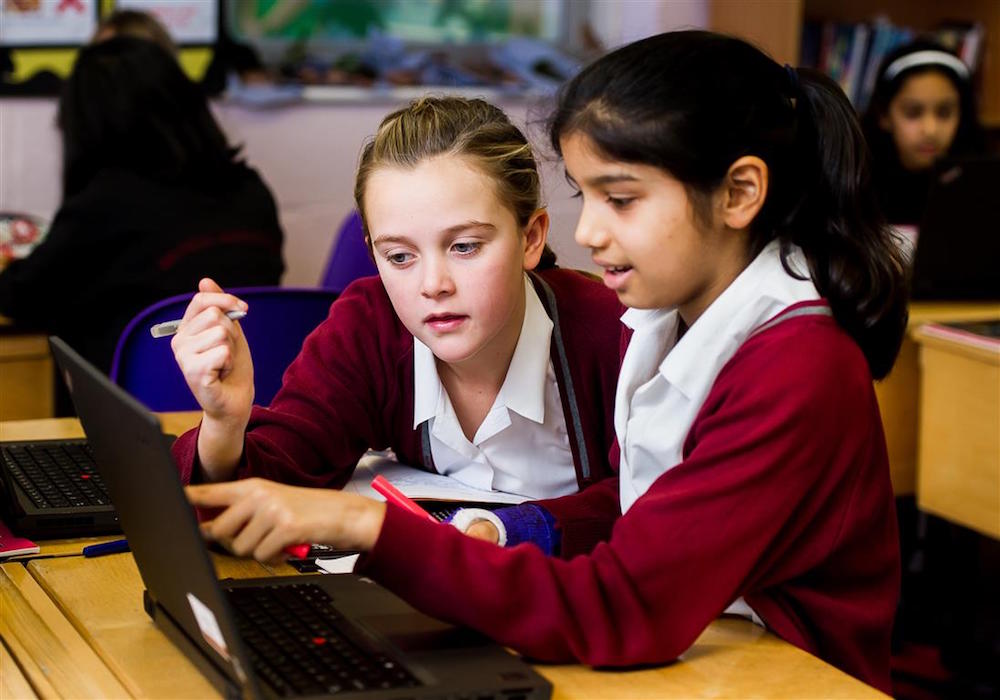It is, increasingly, a woman’s world
Posted on 11th Apr 2016 in Prep Schools Guide, School News
Angela Drew, Headmistress of Bromley High School, explains the advantages of a single-sex education for both girls and boys...
Twenty years ago there was no great difference between the success of boys and girls in examinations. Now girls outperform boys in examinations at all levels and in virtually all subjects – even in formally male preserves such as physical education, maths and physics. Girls are now 35% more likely to go to university than boys and by 2025, 70% of university students are destined to be female.
Certainly, we need to turn our attention to the education of boys, to solving the conundrum of how to motivate boys to achieve their best. Having spent ten years as the governor of a small boys’ only Prep School, I was always struck by the eagerness and enthusiasm of young boys’ in the classroom, the prevalence of laughter in their learning and also the competitive spirit which drove lessons along. Equally striking is the politeness of boys in the single-sex Prep School environment. In an all boys’ environment there is often a palpable emphasis on old fashioned courtesy – on shaking hands, making eye contact and initiating polite conversation.
A single-sex environment frees boys and girls to be themselves – the best version of themselves that they can be. My own school is one of those increasingly rare institutions: a school which is single-sex right through from 4-18 - no co-educational Sixth Form or Kindergarten tacked on at the beginning or end for us. Once, single-sex education might have been perceived as the safe, traditional option but, for me, it has come to represent a distinctive and even radical choice. To choose a girls’ education is to opt for an infrastructure which promotes resilience and supports girls in selecting the riskier, harder and more aspirational path in life – and it is also the source of much joy, friendship and fun.
It is wonderful to see mud splattered girls of 7 or 8 revelling in their first encounters with rugby or learning to win and lose in hockey and netball; girls entertaining the elderly with songs from their panto; girls participating wildly in the actions of ‘The Twelve Days of Christmas’. There is a sense of joyful abandon, a happiness at being part of the group. But there is an equal sense of enjoyment in the academic satisfaction of working together and that is true from the earliest years.
Each child is unique: no two girls learn in exactly the same way and every boy has his individual traits and preferences. Yet, while we tend to shy away from simple generalisations about boys’ and girls’ ways of learning, certain observable differences are seen in the behaviour of boys and girls in the playground and in the classroom. Boys tend to play different kinds of games from girls. Boys are typically more hierarchical; girls more collaborative. As they grow older, girls tend to be better at articulating their feelings, but boys tend to answer more often in class discussion.
Crucially for Junior Schools and Prep Schools, girls tend to develop communication skills more quickly than boys. They start to talk earlier and more fluently. By the age of 3 99% of girls can talk, whereas it takes almost an additional year for boys to reach this level. By the age of 7, only 20% of girls display difficulties in reading, compared with 33% of boys.
Girls also write at an earlier stage. Thus in the early years of Junior School, boys tend to be more active in the classroom but slower to develop the fine motor control necessary for writing.
All this means that the learning environment in a girls’ only Junior School can be much more language rich from the very beginning (and correspondingly, boys’ only junior schools can develop boys’ self-esteem and self-confidence through a curriculum which engages their enthusiasm and inculcates a love of learning).
At the 4-11 Junior section of Bromley High School, the learning in the classroom is enriched through an immersion in language - through storytelling, creative writing and drama. As part of the co-curricular programme, girls work with a professional storyteller to learn the lost art of telling folk tales. Words and ideas are at the heart of all we do to stimulate the girls’ curiosity and imagination through diverse programme of visits, activities and festivities. Dressing up is a visual expression of girls’ vivid imaginations at work – as is richly evident in the saris and sunflower dresses on India day and ‘swinging 60s’ day or the costuming of the huge range of plays, concerts and productions each year.
But perhaps even more importantly in a Junior School is that an all girls’ school sets out to encourage risk-taking and resilience from the earliest years. If women are to flourish in the workplaces that now welcome them in, they must learn to tackle new challenges and to live with failures when they come.
So girls schools will challenge the stereotypes outside the classroom too: there will be choirs and orchestras but also rock groups. Girls will always be encouraged to leave their comfort zone and try something new. Chess, circus skills, fencing, computing clubs are just as popular as ballet and gymnastics in an all girls’ environment.
Let’s celebrate our single sex Junior Schools – and in girls’ only Junior Schools let confidence grow and creativity flourish.
For more information about Bromley High School, see their profile on School Search.